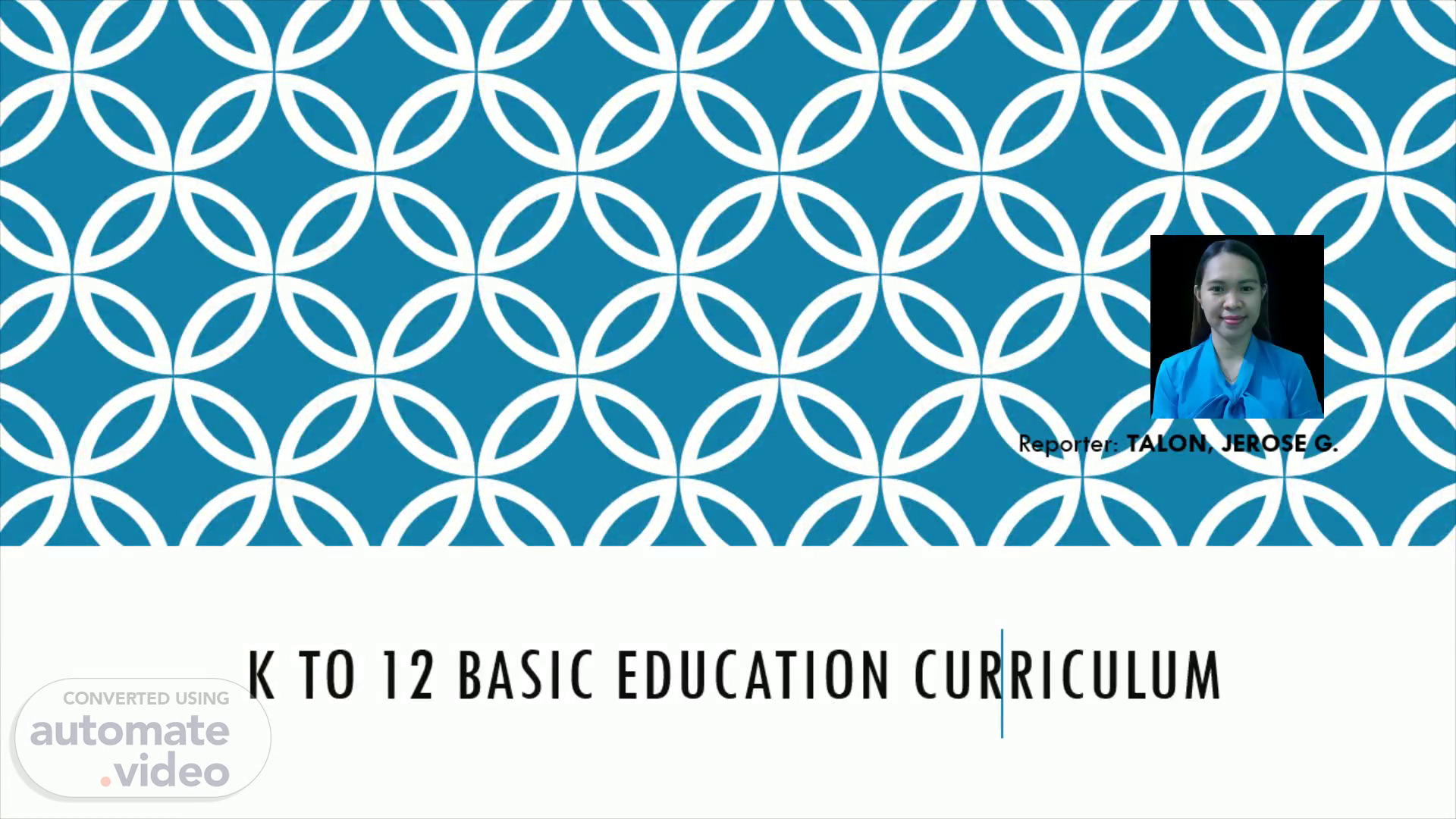
k to 12 basic education curriculum
Scene 1 (0s)
k to 12 basic education curriculum. Reporter: TALON, JEROSE G..
Scene 2 (8s)
principles. Develops thinking and language through interactive learning; Develops communicative competence and critical literacy; Draws in literature in order to develop students’ understanding of their literary heritage; Draws on informational text and multimedia in order to build academic vocabulary and strong content knowledge; Develops students’ oral language and literary through appropriately challenging learning; Emphasizes writing arguments, explanatory/informative text and narratives; Provide explicit skill instruction in reading and writing; Build on the language, experiences, knowledge and interests that students bring to school; Nurtures students’ sense of their common ground in using language/s for communication as present or future global citizens to prepare them to participate is school and in civic life, and; Assesses and reflects the students’ ability to interpret and/ or communicate in the target language..
Scene 3 (42s)
iii. Needs of the learners: the context. The generation born after the year 1994 until 2004 is referred to as Generation Z. This is the first generation to be born with complete technology. They term as digital natives and are extremely comfortable with technology.
Scene 4 (58s)
Negative effect of technology. Reduced attention span Learning barriers Lack of sleep Increased risk and lack of privacy Risk of depression Decreased communication and intimacy Cyberbullying Obesity.
Scene 5 (1m 10s)
benefits. TRAININ6. This generation is considered to be creative and collaborative and will have a significant impact on the way companies work when they join workforce A dept. at multi-tasking Technology gives us access to more information Improvement of productivity Allows remote education Saves time.
Scene 6 (1m 26s)
GENERATION Z kids will grow up with a highly sophisticated media and computer environment and will be more internet savvy and expert..
Scene 7 (1m 36s)
iv. Outcomes. The ultimate goal of the language arts and multiliteracies curriculum is to produce graduates who apply the language conventions, principles, strategies and skill in; Interacting with others, Understanding and learning other content areas, and Fending for themselves in whatever field of endeavors they may engage in..
Scene 8 (1m 53s)
Communicative competence. Is a synthesis of knowledge of basic grammatical principles, knowledge of how language is used in social settings to perform communicative functions can be combined according to the principles of discourse..
Scene 9 (2m 6s)
Competencies:. Grammatical/linguistic competence Acquisiton of phonological rules, morphological words, syntactic rules, semantic rules and lexical items. 2. Sociolinguistic competence Refers to the learning of pragmatic aspect of various speech acts namely, the cultural values, norms, and other socio-cultural conventions in social contexts..
Scene 10 (2m 36s)
2. multiliteracies. Are defined as literacy practices that are colliding with technology modes of representation. - the element of ‘multi’ in multiliteracies covers many aspect of literacy..
Scene 11 (3m 3s)
curriculum. The curriculum aims to help learners acquire highly-developed literacy skills that enable them to understand that English language is the ,most widely used medium of communication trade and the arts, science, mathematics, and in world economy. English language is a dynamic social process which responds to and reflects changing social conditions, and that English in inextricably involved with values, belief and ways of thinking about ourselves and the word we dwell in..
Scene 12 (3m 27s)
“ knowledge age” students in this age must be prepared to compete in a global economy, understand and operate complex communication and information systems, and apply higher level thinking skills to make decisions and solve problems. the language arts and multiliteracies curriculum (LAMC) - Is composed of five (5) intricately intertwined and integrated sub-strands (listening, speaking, reading, writing, and viewing) that serve as building blocks for understanding and creation of meaning and for effective communication across curricula..
Scene 13 (3m 50s)
Five components of cirriculum. CURRICULUM. Component 1 : illustrate learning process that will effect acquisition and learning of the language. Component 2 : describes knowledge and skill areas which are essential to effective language use which will be develop through language arts. Component 3 : show the interdependence and interrelationships of the macro-skills of the language and the development of thinking skills allowing students to make meanin g through language. Component 4 : explains the holistic assessment of the language arts and literacy curriculum which serve as feedback of its effectiveness to students, teachers, school, administrators, and curriculum developers..